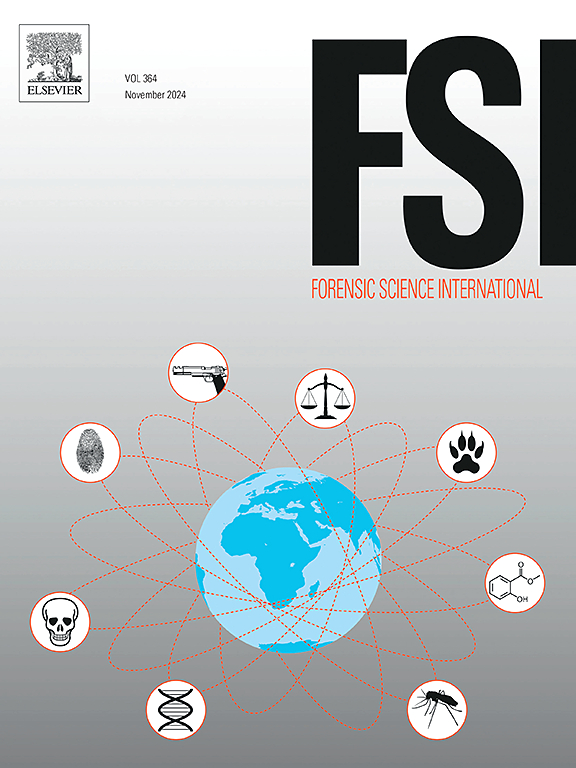放射性碳和炸弹脉冲定年法在法医环境:一个系统的回顾。
IF 2.2
3区 医学
Q1 MEDICINE, LEGAL
引用次数: 0
摘要
骨骼放射性碳分析,特别是通过炸弹脉冲测年,是法医调查中估计人类遗骸死后时间间隔的重要工具。然而,对实验室数据的解释存在一些局限性,因为这可能与死后时间间隔相差多年,这取决于解剖区域和采集的骨部分,以及个体的年龄和其他参数,因为这些因素会影响骨更新。近年来,进行了许多研究,但数据不标准化,样本有限。因此,有必要(作者自己在日常法医实践中只有骨骼可用时的经验)在一篇文章中总结文献中传播的数据,并尽可能地将数据标准化,仅局限于法医案例,在审查中不仅是关键的,而且是系统的,以便有具体的和准备使用的信息来解释实验室结果。因此,这项工作不仅旨在强调未来研究多种组织类型的标准化方法的复杂性和必要性,而且还可以立即帮助改进对放射性协作提供的结果的解释,以便尽可能可靠地获得死后间隔。本文章由计算机程序翻译,如有差异,请以英文原文为准。
Radiocarbon and bomb pulse dating in the forensic context: A systematic review
Radiocarbon analysis in bones, particularly through Bomb Pulse dating, is an essential tool in forensic investigations for estimating the postmortem interval of human remains. However, there are some limitations related to the interpretation of laboratory data, since this can differ from the Post Mortem Interval by many years, depending on the anatomical district and the bone part sampled, as well as the age of the individual and other parameters, since these elements influence bone turnover. In recent years, many studies have been conducted, but with non-standardized data and on limited samples. Therefore there is a need (experienced by the authors themselves in daily forensic practice when only bones are available) to summarize in a single work the data spread in the literature and try to standardize data, as much as possible, with limitation to forensic case only, in a review that is not only critical, but also systematic, in order to have specific and ready to use information for the interpretation of laboratory results. This work, therefore, not only aims to highlight the complexity and the need for standardized methodologies on multiple types of tissue for future research, but also to be an immediate help to refine the interpretation of the results provided by radiocorabion in order to have a Post Mortem Interval as reliable as possible.
求助全文
通过发布文献求助,成功后即可免费获取论文全文。
去求助
来源期刊

Forensic science international
医学-医学:法
CiteScore
5.00
自引率
9.10%
发文量
285
审稿时长
49 days
期刊介绍:
Forensic Science International is the flagship journal in the prestigious Forensic Science International family, publishing the most innovative, cutting-edge, and influential contributions across the forensic sciences. Fields include: forensic pathology and histochemistry, chemistry, biochemistry and toxicology, biology, serology, odontology, psychiatry, anthropology, digital forensics, the physical sciences, firearms, and document examination, as well as investigations of value to public health in its broadest sense, and the important marginal area where science and medicine interact with the law.
The journal publishes:
Case Reports
Commentaries
Letters to the Editor
Original Research Papers (Regular Papers)
Rapid Communications
Review Articles
Technical Notes.
 求助内容:
求助内容: 应助结果提醒方式:
应助结果提醒方式:


